 Our reviews are 100% organic. We do not accept payment for reviews or bundle with advertising budgets. In most cases, the brand is providing the product to our reviewers free of charge.
Our reviews are 100% organic. We do not accept payment for reviews or bundle with advertising budgets. In most cases, the brand is providing the product to our reviewers free of charge. It’s unusual to review a product almost two years after it first hit the market, but when presented an opportunity to test the COROS VERTIX, we were compelled. One of the company’s noteworthy attributes is their ongoing product improvement with software updates and new feature sets long after the initial launch, and the VERTIX has undergone some notable upgrades since its original release date. We also have long-term experience using the very similar COROS APEX Pro (see our review), and were intrigued about how those two models distinguish themselves in terms of the ideal user profile.
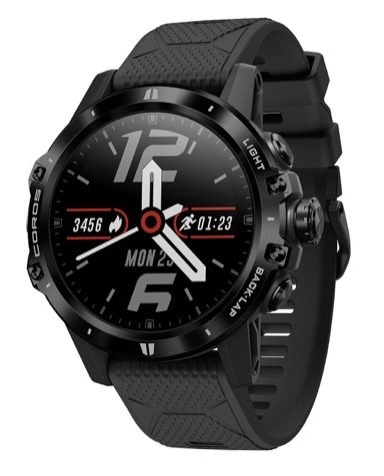 After an extensive testing period with the VERTIX, that second point remains the crux of the discussion about the watch, which is extremely durable and highly functional, but occupies a space that doesn’t make it a true standout for any particular reason. From a build and price standpoint, it is in the same category as the Garmin Fenix 6, Polar Grit X, or Suunto 9 Baro, but has a much smaller feature set, both in terms of activity and smart capability (music, payments, etc). From a functional standpoint, it moderately improves upon the company’s APEX Pro, but perhaps not enough to warrant the price jump. However, considered on its own merits, the VERTIX is an extremely strong watch, which is where we’ll start our description.
After an extensive testing period with the VERTIX, that second point remains the crux of the discussion about the watch, which is extremely durable and highly functional, but occupies a space that doesn’t make it a true standout for any particular reason. From a build and price standpoint, it is in the same category as the Garmin Fenix 6, Polar Grit X, or Suunto 9 Baro, but has a much smaller feature set, both in terms of activity and smart capability (music, payments, etc). From a functional standpoint, it moderately improves upon the company’s APEX Pro, but perhaps not enough to warrant the price jump. However, considered on its own merits, the VERTIX is an extremely strong watch, which is where we’ll start our description.
COROS describes the VERTIX as “the most durable GPS watch on the planet,” and that message is delivered the moment the watch arrives on your doorstep in a COROS-branded strongbox (think Pelican case) that looks like it could survive nuclear fallout. Build quality and durability is a point of emphasis with the VERTIX, which adds a diamond-like coating to the Sapphire glass of the APEX Pro, with titanium alloy casing instead of aluminum for greater strength. The casing seems virtually scratch-proof and crack-resistant, and the VERTIX has an expanded working temperature range of -22 degrees with water resistance to 15 ATM, both of which exceed the specs of the APEX Pro. And while you may never use this watch at the South Pole or in the Mariana Trench, those specs also speak to the durability of the VERTIX over multiple years of use. Taken over the lifetime of a watch, multiple small-scale bumps, knocks and other impacts have a cumulative effect, so the more resistance you start with, the longer period of time you have before function of the watch is potentially compromised.
One of the most impressive points about the VERTIX build quality is that it meets or exceeds specs of the expedition-style watches listed earlier, but it’s clearly the lightest and sleekest of them all. It comes as close to a perfect hybrid of full-feature adventure and sleek running watch as any model we’ve tested. New quick-release band options allow you to further customize or accessorize the VERTIX, and all of them are comfortable after hours and days of constant wear. And if you really want the luxury look, there is a super deluxe, hand-assembled, translucent “Icebreaker” model crafted with azure titanium and a clear watch body, which sells for an additional $100 above regular MSRP.
The major selling point of the VERTIX is the amazing amount of battery life, with a 30% improvement on the already impressive life span of the APEX Pro. The VERTIX boasts 60 hours of continuous GPS monitoring at 1-second intervals, and up to 150 hours in UltraMax mode taking GPS readings every 30 seconds. We wore the VERTIX straight out of the box for an impressive 32 days on a single charge, running, hiking and biking approximately 24 cumulative GPS hours before getting an alert that there was 10% battery life remaining. It didn’t take any power-saving settings or feature adjustment tricks to do this; that’s just how strong the battery life is. Gone are the days of watches needing a recharge during your 100-mile race, and the elites may even be able to push the 200-mile threshold on a single charge. Combined with a mere 2-hour charging time from 0% to 100%, there really isn’t anyone expanding the battery efficiency envelope like COROS.
Another pleasant upgrade to the VERTIX is a larger digital dial that protrudes more prominently than on the APEX Pro, giving it improved functionality with gloves or in colder temps. We found this newer dial noticeably easier to manage during runs and workouts. Starting with the APEX Pro, COROS introduced touchscreen functionality which carries over to the VERTIX – this offers the ability to switch between activity screens, control the map in navigation mode, and scroll through daily widget data such as heart rate, barometer information and elevation by swiping the screen. We found that the VERTIX touchscreen worked well, even with sweat and moisture on the screen, and was especially helpful when manipulating the breadcrumb navigation screen during a loaded route run.
The recent update to the COROS platform that caught our attention was an enhanced navigation feature profile that includes the use of checkpoints. A GPX file can be loaded onto the COROS app that has a series of pre-defined checkpoints (say, aid stations at a race for example) and then loaded onto the watch as a route (to create a route visit alltrails.com). When the route is started on the watch, you’ll see the distance to the next checkpoint as well as an elevation map of that section to reach the next checkpoint. You still can’t navigate to a specific checkpoint if you get off course for some reason, and you can’t set a checkpoint during the run and then navigate back to it later – these are basic features on other high-end GPS watches that illustrate the gap COROS still has to make up to be on even footing in this area. Still, it’s an important development that shows COROS is working to expand this feature set for future improvements. A key challenge for them will be how to augment the navigation profile without compromising battery life, since topo maps tend to take up a huge amount of internal memory and GPS bandwidth during normal use.
A final consideration in using the VERTIX is that COROS exclusively uses their mobile application for everything: there is no desktop equivalent to manipulate any watch settings, or to see enhanced data readouts from activity and physiological data. That can take some getting used to, especially if coming from the Garmin or Polar environments that have robust desktop platforms in addition to app interfaces. The COROS app is easy and intuitive to use, and streamlines setup and customization of a new device—you can unbox the VERTIX and be out for a run in only a few minutes. The app main page features organized and easy-to-digest data, including steps, heart rate tracking, training load and sleep quality. You can select any one of these metrics to get a deeper dive on data trends, with one quirk: this deep dive automatically rotates your device’s screen to landscape. COROS is also delving into workout programs that can be fully customized and loaded onto devices, including swim, run, bike and strength categories. The strength category is the most interesting and in-depth, with different workouts that can be filtered by muscle groups or body parts, with resulting data pulled onto a “muscle heatmap” to show how recovered the body is from the exercise. Once again, these training guidance elements aren’t nearly as advanced or versatile as similar features in the Garmin and Polar ecosystems, but COROS is actively working to narrow those gaps.
For most of its time on the ultrarunning scene, COROS has positioned itself with aggressively priced, dependable, high-performance watch options that provide most of the basic features athletes want. Jumping into a new price category with the VERTIX, it gives up the price advantage over long-standing companies without delivering a comparable feature set. It has also cornered itself a bit in that the APEX Pro is a very strong and comparable option for $100 cheaper. For users who need the absolute premium in battery life or rugged build quality, the VERTIX may be a compelling option. If COROS continues to bridge the feature divide between the big players, it could become increasingly attractive in months and years to come.
The COROS VERTIX GPS watch is available at www.coros.com.
Summary: The COROS VERTIX is a sleek but rugged adventure watch with massive battery life and top-end style, function and durability. It has improved durability and battery life compared to the COROS APEX Pro, and a less-developed feature set than comparable watches in this category from longer established brands. Ease of use has been improved with a modified digital dial, and ongoing software updates are steadily expanding and augmenting the feature profile.
MSRP: $599-$699 depending on model
- Weight: 76g with silicone band, 63g with nylon band
- Dimensions: 47 x 47 x 15.6mm
- Titanium alloy casing
- Screen material: sapphire glass with diamond-like coating
- Quick-release interchangeable bands
- Battery life:
- 60 hours in full GPS mode
- 150 hours in UltraMax
- 45 days of regular non-GPS use
- Charging time: Less than 2 hours
- Activity tracking: continuous HR, 24/7 SaO2 monitoring, sleep tracking and metrics, calories and steps
- Daily, weekly, monthly summaries available for tracking metrics
- Touchscreen mode
- Water resistance: 15 ATM
- Working temperature range: -4°F to 140°F (-20°C to 60°C)
- Optical pulse oximeter
- Optical heart rate monitor
- Barometric altimeter
- Accelerometer
- Compass
- Gyroscope
- Thermometer
Running features:
- Speed, pace, distance
- Route navigation, breadcrumb and back-to-start
- Compass
- Wrist-based running power
- Phone notifications during activity
- Training analysis (VO2max, altitude mode, training effect, training load, threshold pace)
- Training effort based on aerobic and anaerobic thresholds
- Activity-based recovery time
- Interval and multisport training
- Structured workouts and training programs




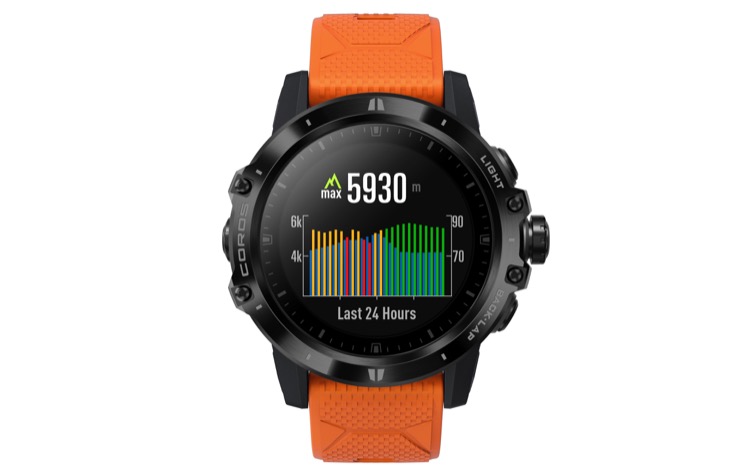






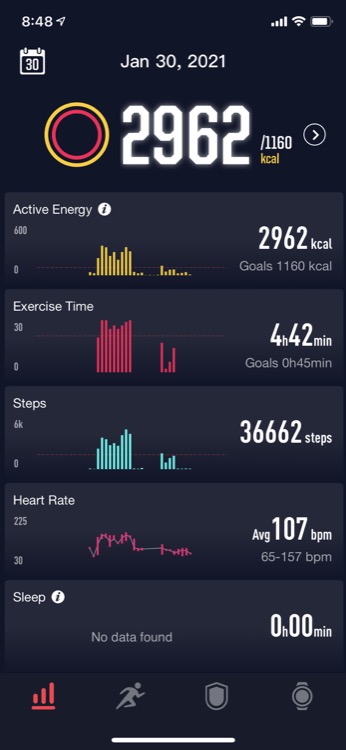


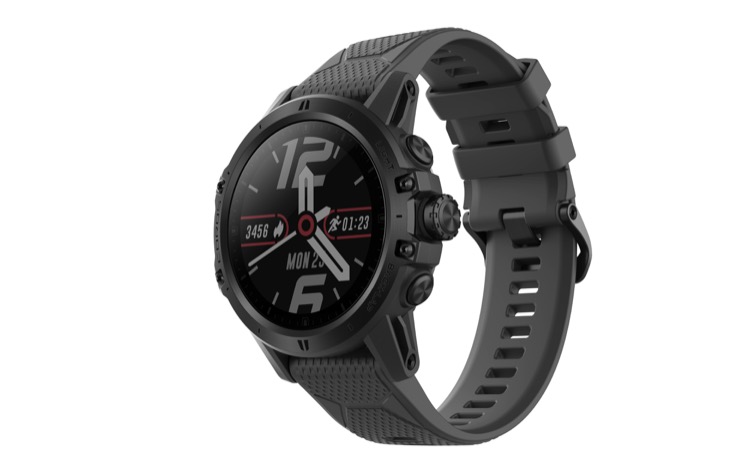
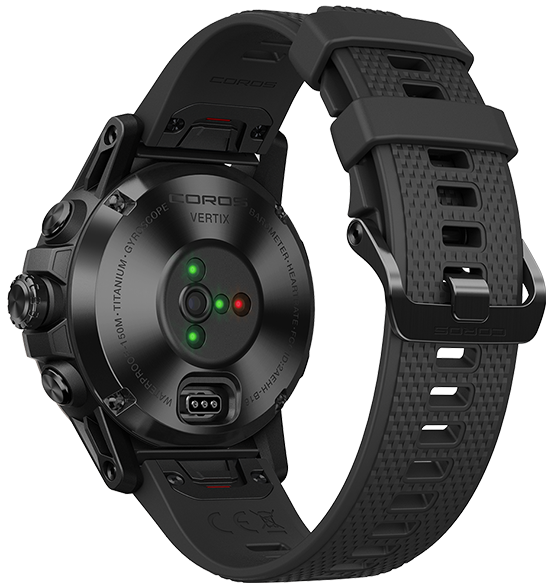
8 comments
Accuracy?
Hi David, during testing we had no issues and found the Vertix GPS to be accurate.
I’ve not a Vertix or even Apex Pro. I’ve been using the Apex 46mm daily since November 2019 and am seriously impressed. The features other machines have and Coros doesn’t are not important to me but battery life is. During a 24 hour race in January 2020 it finished with 55% battery left. Amazing. Coros are my go to now, reliable and way to use. An upgrade to the Apex Pro or Vertix is in my future but right now the standard Apex is more than capable.
I had the Vertix. Amazing battery life but the Fenix 6 Pro is pretty comparable and has way more features. And I found the heart rate tracking quite miserable on the Vertix sadly. That was probably the biggest issue I had with it. I found it way overpriced for the feature set as well.
Coros/Garmin/Suunto, if you’re listening…ditch the wrist based HR monitor and provide a chest strap, simplifying the watch. Garbage wrist HR data is worse than no data. I’d far rather have a sleeker, lighter watch.
After using Garmin for a decade and Vertix for a couple of years impressed and highly recommend. Chose for the battery life which is truly liberating for ultra runners. Fully agree there are some gaps to more established alternatives but impressed with how much functionality they continually add and it just works, have had no bugs or things to research as I did on the forerunner.
The battery life of a Coros is impressive but one thing I find lacking in every single review of these watches is the fact that you have to upload every single “route”. EVERY SINGLE ROUTE. No one ever mentions this. There are no native maps in this watch. If you try to navigate it is a black screen. For the price of Apex Pro you can get a Garmin with every trail map you could ever need loaded into it. Who wants to sit down and create a route and then upload it into your watch for every single run? Especially for those of us who enjoy running and exploring off trail, Coros doesn’t cut it in the navigation department.
Hi,
can you please tell me, is this watch useable if you don’t have internet? I mean, Garmin is useless if you don’t have internet.
can you open the app on your phone and check the watch even if you don’t have internet? on Garmin is not possible.
thank you.
Comments are closed.